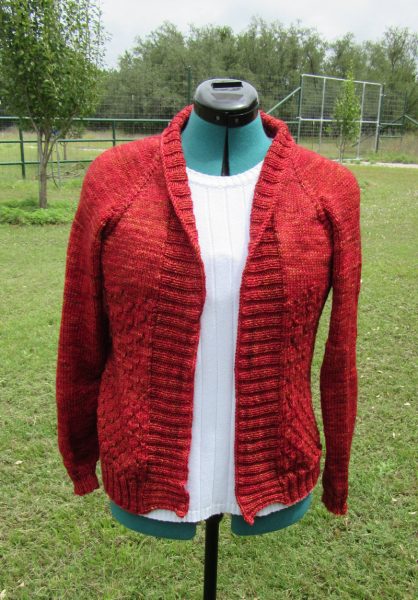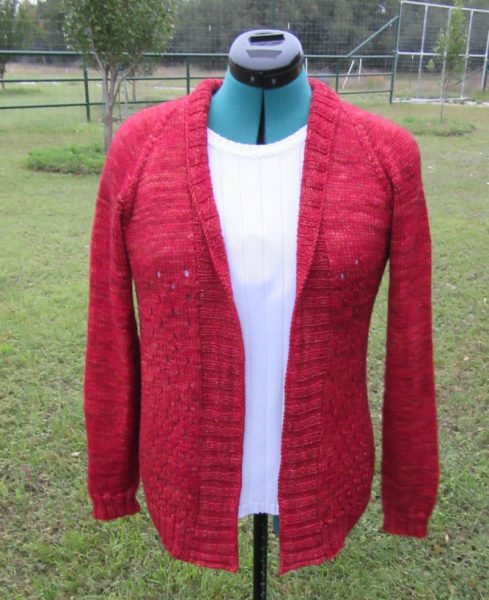When I first began knitting sweaters, being pretty much self-taught, I had no idea what blocking meant or how to do it.
Above is a photo of the Campside Cardi not blocked.
Below is a photo of the Campside Cardi after blocking.
The color didn’t change . . that’s just the difference in the light outside. You can see that the knitting looks more relaxed after blocking. Wires and pins can be used to shape a knitted piece, especially something like a shawl that has lace points that need to be defined. There should be no stretching during blocking.
Some yarns have a tendency to grow or bloom during blocking. You can see that after blocking, the piece is several inches longer. That’s where a swatch comes in handy. Usually, a swatch is knitted in the same pattern that will be used in the project, usually about 4″ x 4″ of pattern, then it is soaked and blocked. If it’s a piece that’s going to be machine washed and dried, you would toss the swatch in the washer and dryer. Then the stitches per inch and rows per inch are measured. Just a little bit off can make a huge difference in how the piece fits.
It’s important to know whether your swatch is going to grow or shrink . . or do nothing . . after soaking and drying. A piece that should be 18 stitches/4″ that ends up 16 stitches or 20 stitches/4″ is not going to fit very well unless adjustment, usually in needle size, are made.
When making something that needs to fit, I always swatch. When making a scarf or shawl, I rarely swatch.



Joyce says
Love your new sweater! It is amazing what blocking does, isn’t it?
I finally finished my Hitofude and got it blocked. We’ve had some unseasonably cool weather for May, so I’ve even worn it once. I’m very happy I finished a sweater (in less than a year). Lately, due to the fact I have too many projects on the needles, it’s been taking me a year (or more) to finish a sweater. I keep vowing to finish more things before starting new ones…HA!